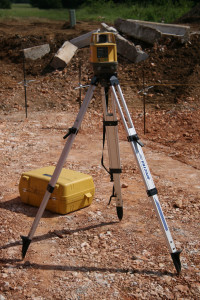 Are employee surveys another example of a parallel universe at work?
Are employee surveys another example of a parallel universe at work?
Those asking for feedback and those giving feedback seem to be in different spaces.
Just when it felt safe and useful for more of us to ask employees for their feedback, it’s become harder to get employees’ attention to get their responses.
If surveys are an important instrument in your toolbox, it’s time to re-examine them. Even if you follow through on employees’ feedback and make adjustments to your processes and content after reviewing survey results, as I do, we’ve got to acknowledge that employees are ready to move on.
You can’t blame employees for ignoring pleas to take surveys. Everywhere employees turn, they’re getting a request to take a survey.
“How was the meeting?” “How helpful was the training?” “What do you think of co-worker X for this 360? How easy was it to file a benefit claim?” “How likely are you to continue working here?” Etc. Etc. Etc.
Outside of work, surveys are ubiquitous too. Online retailers, brick-and-mortar stores, utilities and others want to know about our consumer experience, the service and the products.
While it may be relatively easy and fast for people to take online surveys, it still takes time away from other, more important tasks. And then people wonder: Will anyone bother taking action after gathering all of these survey results?
The Death of Employee Surveys – Fact, Fiction or Somewhere in Between? by Dr. David Youssefnia, the president and founder of Critical Metrics, confirmed what I had been mulling over. (In full disclosure, I worked with David at Mercer years ago and we’ve continued to collaborate on projects at our own firms.)
According to David, surveys today can play an even more important role than they’ve done in the past. For example, they can be a potential predictor of talent retention, measure strategic alignment and gauge future business performance.
While David doesn’t feel that surveys will vanish like the “cassette tape, 8-track or VCR machine,” he does feel like “we are at the beginning of a new phase … that may impact how often and if at all some companies will be using surveys within the next five years or so.”
David’s blog is definitely worth reading for his macro take, especially since he’s a metrics guy.
As someone who uses surveys primarily to gather insights about meetings to help my clients and me practice continual improvement, I’m transitioning away from online surveys toward the following:
- Reserve time at the end of meetings to do a quick “Plus Delta.” Using a flipchart, whiteboard or computer, you ask people what went well (the plus) and what could be better (the delta). This works best with groups of fewer than 25 people or so. You collect immediate top-of-mind data from those who feel comfortable and confident speaking up and out—which isn’t everyone.
- Use paper surveys at the meetings. In my experience, a one-page survey with a combination of questions using a Likert scale and open-ended comments works best. You can either hand out the survey at the beginning of the meeting or at the end. Regardless, you ask people to complete the survey before they leave the room. The upside: survey participation is close to 100%. The downside, you have to input or scan the data.
- Conduct “crummy little tests.” This works well when you have either a standing meeting or a series of meetings over a fairly short time frame. You experiment with some or all of the agenda, meeting format and other particulars to find out what works best for the group and the outcomes you’re wanting for the meeting. (Be sure to tell the group that you’re doing trial and error tests to determine what works best. For example, you may want to examine decision making, participation levels, quality of discussion, or anything else that is of value to you and the group. As a result, you improve the meetings and outcomes of this group, but your findings may not be transferable to others.)
These first two methods are back to the past and are easiest to administer, especially for in-person meetings. With the paper surveys, though, it can be time intensive to compile the data, especially for large numbers of meeting participants.
The last method—the “crummy little test”—is an adaptation of the “crummy little trials” that Dr. BJ Fogg, the behavioral scientist and researcher, advocates for testing behavior design. From his viewpoint, it’s better to test something quickly to determine how it works and then make adjustments rather than spend time wondering what to do.
From a learning perspective for participants, none of these three methods is ideal—which is a whole different topic. Online surveys are much superior.
However, if you as the meeting facilitator want to get feedback, you may be better positioned to survey the landscape using a different approach than online surveys.
How are you getting helpful, actionable feedback about your meetings these days?

0 Comments